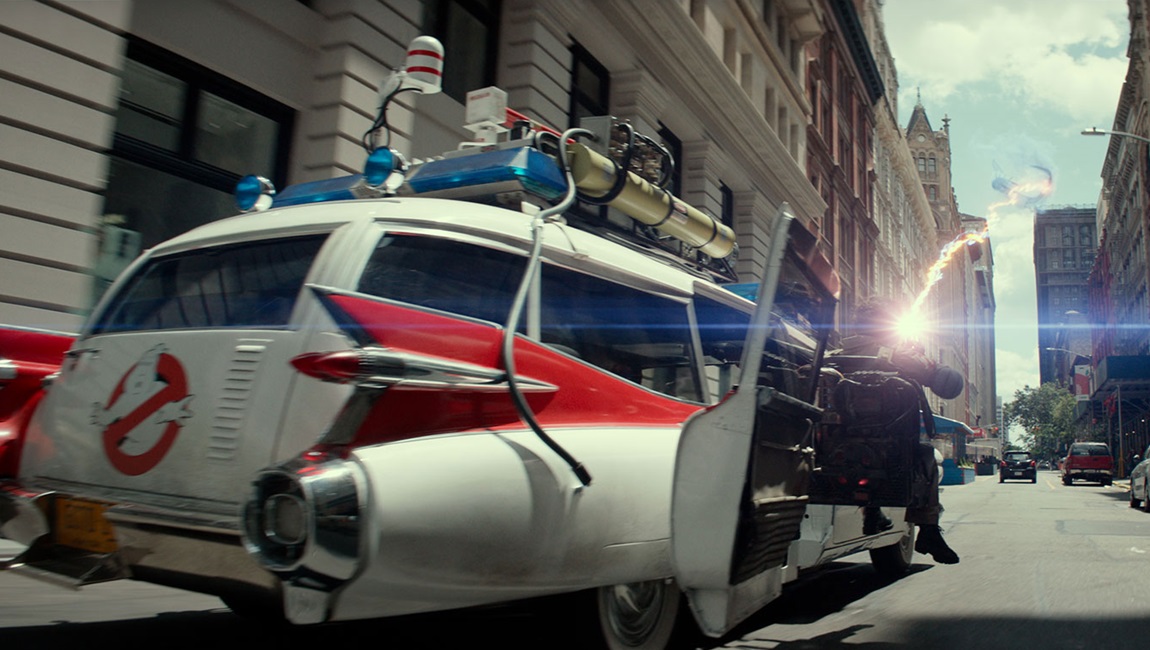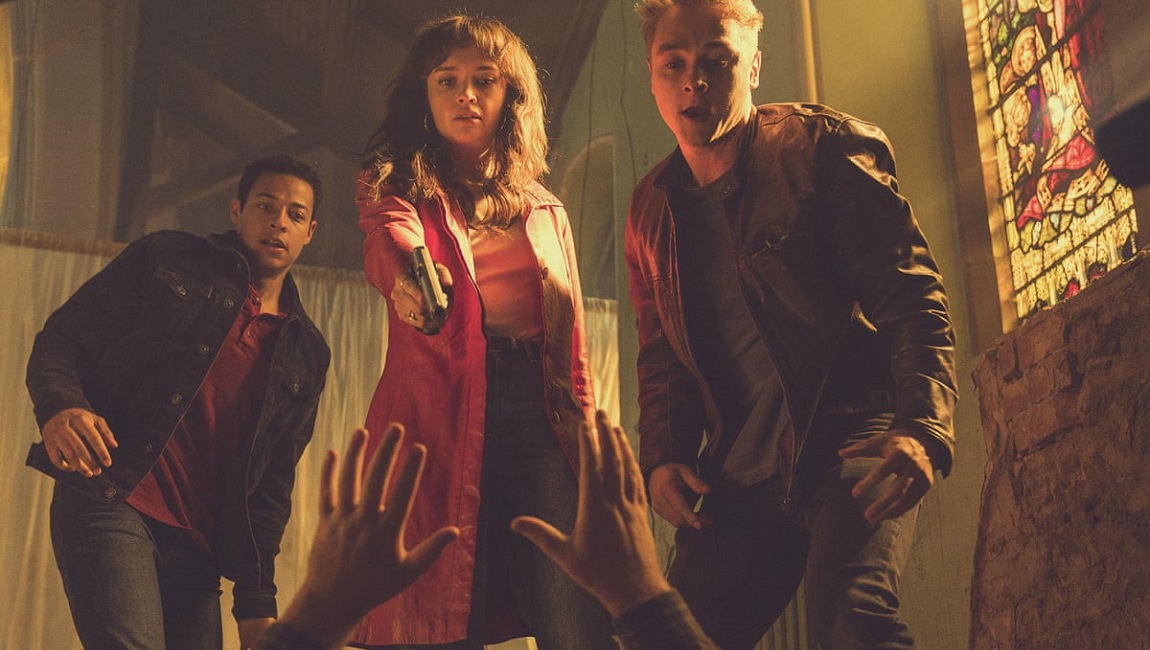How old were you when you recognized that the villain of Ivan Reitman’s original Ghostbusters was the Environmental Protection Agency? Obviously, it’s the text of the film — no parsing of hidden meaning required — with the government agency personified by sniveling bureaucrat Walter Peck (played by perennial 1980s slimeball character actor William Atherton), who has the temerity to question whether a bunch of grease-covered schlubs should be running around a densely populated city firing unregulated laser guns of their own design as part of their recently launched business. However, upon reflection, it’s a curious framing of an agency that is primarily responsible for things like making sure coal mine runoff isn’t seeping into drinking water or carcinogenic smoke isn’t being belched into the air. Yet it never really raised an eyebrow because the jokes were funny, the stakes were high, and there’s a sort of innate “movie logic” to it as a classic snobs vs. slobs interpersonal conflict (the original Ghostbusters were themselves snooty university professors reluctantly tossed into blue-collar jobs, but let’s not dwell on that). But maybe somebody really should intervene when an Ecto-Containment System is being built in a commercial zone without a permit.
Atherton returns as Peck in Ghostbusters: Frozen Empire, the follow-up to Jason Reitman’s legacy-sequel/appeasement of whiny men on the Internet, Ghostbusters: Afterlife. Peck has ascended to the rank of New York City mayor — continuing the trend in these films of giving us preening, obstructionist blowhards who are still preferable to actual New York mayor Eric Adams — and he still has an ax to grind with the Ghostbusters. In addition to all the indiscriminate damage to city property and high-speed pursuits through the streets of Manhattan in a 65-year-old retrofitted ambulance, Mayor Peck is particularly concerned with the idea of a 15-year-old wielding a “backpack-sized nuclear accelerator,” and it’s hard to blame him. The teenager in question is Phoebe Spengler (McKenna Grace), the preternaturally brilliant but socially awkward granddaughter of original Ghostbuster Egon Spengler who, along with the rest of her family, was introduced in Afterlife and, for reasons that are never sufficiently explained, have collectively relocated from Oklahoma to New York to run the family business. And like the mayor, I have questions.
Why are a couple of teenagers — in addition to Phoebe, her 18-year-old brother, Trevor, played by Stranger Things’ Finn Wolfhard, riding shotgun — being asked to undertake this insanely dangerous job of keeping the city safe from ghosts? For that matter, what qualifies their frazzled mother, Callie (Carrie Coon), and her affable boyfriend/Phoebe’s former science teacher Gary (Paul Rudd), to lead the team? Weren’t they previously transformed into demon dogs and pretty much consigned to the sidelines of the previous film’s big light show climax? How is that a suitable audition for what appears to be a highly technical, hugely difficult job? Why does the film repeatedly point out that they’re working for free and living out of a dilapidated firehouse that’s falling down around them? Are we to believe they’re not billing anyone for the removal and storage of ghosts? Terminix would never! Also, are there ghosts in cities other than New York, and might there be ghostbuster chapter whose ranks are made up of people old enough to buy a beer?
These are questions one shouldn’t ponder while watching a Ghostbusters movie, and yet, Frozen Empire doesn’t give us much else to consider. The film’s central conflict, which involves an ancient demon contained within a brass orb with designs on turning the world into a lifeless terrain of snow and ice, presided over by an army of the dead, takes nearly an hour to kick in. By film’s end, the number of characters with a credible claim of being called a ghostbuster has ballooned to 12, which in addition to being unwieldy and detrimental to telling a coherent story — the film feels like half a dozen drafts of a screenplay haphazardly stitched together, with entire subplots and character arcs dropped abruptly without any actual resolution — only raises more questions that we really shouldn’t be thinking about, like “why do all these supporting characters have fitted jumpsuits with their names already stenciled on them standing by?” and “who has the foresight to construct a dozen ‘Proton Packs’ for a company of four employees?”
The de facto protagonist of the film is Grace’s Phoebe who, having been sidelined from bustin’ because of child labor laws (there’s that nanny state again, interfering with the free market), strikes up a friendship of sorts with an equally sullen teenage ghost: a moody firebug named Melody (Emily Alyn Lind) who died in an apartment inferno decades earlier. It’s kind of like Casper, if the whole thing was queer-coded and thrift shop chic. Grace is a more than capable young actress, but she’s being asked to prop up a tricky young adult storyline which rolls in loneliness, yearning for acceptance, and suicidal ideations (albeit strictly to advance the plot), and it exists uncomfortably alongside the film’s incessant callbacks, shameless product placements, and craven efforts to sell official merchandise. The tone here is decidedly family friendly: no bawdy jokes about receiving oral sex from ghosts or terrifying stop-motion beasties. What once was Bill Murray trying to manipulate coeds into sleeping with him and famously deadpanning that Atherton’s character “has no dick” is now Rudd working up the nerve to be a father to his inherited brood — regrettably, the film has zero interest in Rudd and Coon as a romantic pairing, with the two actors sliding into the role of sitcom parents alternately scolding and consoling their troublemaking children — and kiddie-approved gags about tiny animated Stay Puft Marshmallow Men cheerfully committing self-immolation and stealing big rigs.
It should be noted that, after reviving the franchise following a series of high-profile failures and even claiming he was finally embracing the “family business” by taking the reins from his father Ivan (that’s certainly one way of deflecting nepo baby claims), Jason Reitman didn’t actually direct this film. That distinction goes to Gil Kenan (of the 2015 remake of Poltergeist), who also co-wrote both this film as well as Afterlife with Reitman, and the trade-offs are worth contemplating. In its favor, Frozen Empire scales way back on reverence for Ghostbuster minutia and lore; there are fewer “hero shots” of archaic props and less stopping-the-film-dead-in-its-tracks fanfare over returning characters. Further, the film appears to have actually been filmed, at least in part, in New York City, a refreshing change of pace after the last two films passed off Calgary for Oklahoma and Boston for New York. On the other hand, the film is overly busy, flatly-lit, and plasticky-looking, with Kenan having little feel for action sequences, creature design, pacing, or building suspense (the film rushes through its third act with the whole thing feeling especially like a foregone conclusion). Reitman’s films are often criticized for glibness and retrograde social politics (sometimes deservedly so), but he at least understands how to coax lived-in, mordantly amusing performances out of his actors. It can be worth enduring smirking, squishiness, and centrism if the side effect is the space to explore flawed, deeply human characters.
That humanity void is most felt with film’s older actors, many of whom come from improv and sketch comedy backgrounds and primarily treated these films as a means of goofing around with their friends by trying to maintain a straight face while talking about something as absurd and possibly urophilia-inspired as “crossing the streams.” Frozen Empire squanders them by forcing them to play second banana to child actors, stand around delivering dry exposition, or reacting to offscreen VFX. Nowhere is this most apparent than with Murray, who appears (seemingly at gunpoint) in a contractually mandated two scenes and delivers shitty one-liners someone else wrote for him. The film can’t even be bothered to pair him against his old foil, Atherton, when it’s the sort of film that really demands it. It seems possible the actor spent less time on set than I did in the theater watching him. And for this, I envy him.
DIRECTOR: Gil Kenan; CAST: Paul Rudd, Carrie Coon, Finn Wolfhard, Mckenna Grace, Kumail Nanjiani; DISTRIBUTOR: Sony Pictures Releasing; IN THEATERS: March 22; RUNTIME: 2 hr. 5 min.







